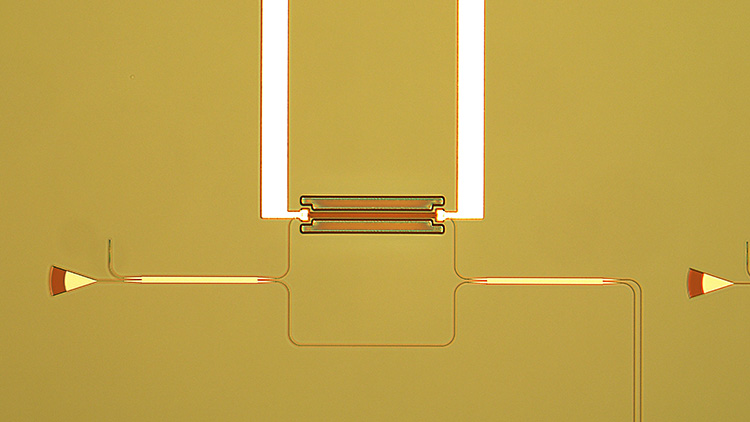PhotonQ project
Veröffentlicht am

PhotonQ project
Exploring a measurement-based and scalable quantum processor

The idea behind quantum computers is that they are expected to one day solve problems that are unaccessible to classic computer systems. However, before such computers can be used in practice, they will have to process considerably more qubits and exhibit lower error rates. A joint research group around Professor Stefanie Barz of the University of Stuttgart is currently developing a photonic quantum processor, which will allow the realization of quantum algorithms with a small number of qubits and, in the long run, enable rapid scaling to qubit numbers relevant to practical applications.
Last year, integrated optical components made of aluminum nitride (AlN) and thermal phase shifters with heating elements made of titanium nitride (TiN) were developed for PhotonQ. AlN waveguides enable low-loss and fast phase modulation through piezo-induced material strain (see picture on front page). TiN heaters, on the other hand, allow very low-loss phase modulation in silicon waveguides due to their short design.
At the same time, e-beam lithography is being optimized for integrated photonics with the Vistec company. To this end, the influence of layout definition, data preparation and exposure on optical performance is being investigated and optimized.
The project also aims to build up expertise in optical assembly and connection technology. To this end, the first fiber-to-chip connections were produced using 3D-printed polymer waveguides (photonic wire bonds). The Vanguard Automation machines required for this are located at ZAQuant at the University of Stuttgart and are also accessible to the IMS. The aim is electronic and optical co-packaging of integrated photonic circuits.
Further information can be found on the following website: www.quantentechnologien.de/
Contact: Mathias Kaschel • phone +49 711 21855-467 • kaschel@ims-chips.de